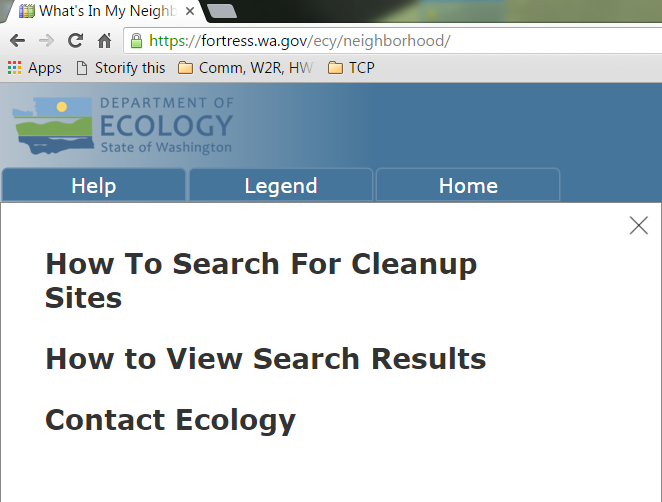Last week, we shared the new What’s In My Neighborhood mapping tool that allows users to search for polluted properties across Washington state.
We received a variety of responses via Facebook, some applauding Ecology’s efforts. Others were understandably alarmed to see dots sprinkling the map around their homes and workplaces.
MTCA basics
Don't forget to check the legend!
Most sites pose little immediate risk to people living near them. In many cases, sites in neighborhoods are old gas stations, home heating-oil tanks, and not big industrial facilities.
In 1988, voters passed a citizens’ initiative that created MTCA. Part of the act is a tax on hazardous substances such as petroleum products, pesticides, and other chemicals.
Money generated by the hazardous substance tax not only helps fund cleanup of contaminated sites, it also funds state and local government programs that protect the environment and people from threats posed by toxic chemicals. Those programs include controlling sources of toxics, such as polluted stormwater runoff. Prevention is more efficient than cleanup, so focusing some funding there is a proactive way to curb future cleanup costs.
Important cleanup principles
-
When the threat is immediate, Ecology takes action before going through the MTCA process (see the cleanup process flowchart below)
-
The polluters pay for cleanup, unless they are financially unable or cannot be located – this is where the hazardous substance tax kicks in
-
MTCA requires that the public be informed about contaminated sites and given the opportunity to participate in cleanup decisions – the What’s In My Neighborhood tool, though not required by law, is another way Ecology is sharing information and encouraging input
-
Because Ecology staff and funds are limited, cleanup sites are prioritized by the risk they pose to people and the environment
The cleanup process
Some flowchart highlights:
-
A lengthy part of the process (#5) involves investigating a site to discover how much contamination is there and everywhere it is located. Then we explore cleanup options. On average, this process takes 3 to 4 years, which can vary depending on how complex the site is. This sounds like a long time, but we can’t come up with a cleanup solution without understanding the problem.
-
If all seven steps are done sequentially, it can take a site 11–12 years to be cleaned up. However, not all sites go through all the steps, and steps can overlap.
We’re here to help and want your feedback





